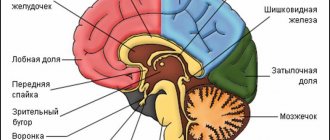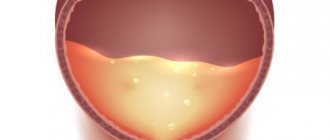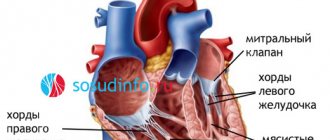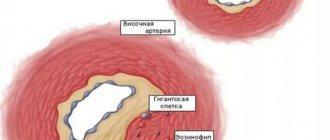What is coma and stupor?
Coma is a disorder of the central nervous system. A person has no consciousness, reflexes or reactions to external stimuli. There is a failure in all the most important life processes.
There are primary and secondary coma. The first occurs with focal brain damage. These could be injuries, tumors, apoplexy. The second is a consequence of some pathological process.
Stupor is one of the stages of coma. It is also characterized by depression of the central nervous system. The patient's reflexes are preserved, but he does not react in any way to the environment. In fact, stupor is an intermediate state between stunned consciousness and coma.
Why do people fall into a coma?
The main reason for the development of coma after a stroke is cerebral hemorrhage or apoplexy. Several factors can provoke it:
- Heavy bleeding.
- Insufficient or completely absent blood circulation in the brain.
- Brain swelling.
- Atheroma. This is a disease associated with blood vessels.
- Poisoning with chemicals or other substances hazardous to the body.
- Callagenosis. Represents pathological changes in connective tissue.
- Angiopathy. This is a condition characterized by the accumulation of a specific protein in the blood vessels of the brain.
- Acute stage of vitamin deficiency.
- Infectious and autoimmune diseases of the circulatory system.
- Most often, the listed pathologies develop with hemorrhagic stroke.
Ischemic stroke very rarely leads to coma. Even if a coma does occur, the chance that a person will come out of it is great. In the hemorrhagic form, the death of brain tissue occurs, which entails serious complications.
Degrees of coma
Depending on how damaged the brain is after a stroke, there are 5 stages of coma:
Prekoma. This is a state when there is no coma yet, but brain functions are weakening. Its duration ranges from 2 hours to several days. The patient's consciousness is confused, his mood often changes, and coordination of movements is impaired. However, all the reflexes necessary for life are preserved. The body reacts to stimuli. A person feels touch.
Coma of the first degree of severity is considered to be stupor. It is characterized by lethargy, difficulties with communication and establishing contact, and increased muscle tone. The patient has difficulty eating. He can only eat liquid meals or drink water.
Second degree. Brain activity is greatly reduced. The patient does not respond to attempts to establish contact with him. However, there is a reaction to loud sounds and bright light (the pupils are constricted). Muscle tone either increases or decreases. Muscle fibers contract chaotically. Reflexes are also inconsistent. In some cases, spontaneous urination and defecation occur. Experts consider the second degree to be a borderline state.
The third degree is the coma itself. The person is in an unconscious state. He has no reaction to stimuli, reduced muscle tone, and muscle twitching is observed, for example, as a response to pain. The functioning of almost all organs and systems is disrupted. Blood pressure drops, heart rate decreases, and breathing slows down.
Fourth degree. It's called an extreme coma. The patient lacks consciousness, reflexes and muscle tone. Blood pressure is low, heart rate is slow, breathing is shallow. It is quite difficult to get out of this state, even if we take into account the development of technology in terms of medicine.
The consequences of a fourth degree coma for the body are irreversible.
Introduction to induced coma
In some situations, the doctor decides to put the patient after a stroke into an artificial coma. This helps protect the brain and the body as a whole from many tragic consequences.
Indications for medically induced coma are:
- compression pressure on brain tissue;
- edema;
- hemorrhages;
- bleeding.
In this state, blood vessels narrow, and the tension of cerebral blood flow decreases. Thanks to this, the risk of brain tissue necrosis is reduced.
A patient placed in an induced coma requires constant attention from medical staff. The drugs used in this case have a number of side effects. These are problems with the respiratory system (pneumonia, pneumothorax), kidney failure, and neurological disorders.
What happens to a person in a comatose state?
If this is a fourth degree coma (deep coma), the patient completely lacks all signs of life. He feels nothing, does not react to stimuli and has no reflexes. His pupils are constricted, his blood pressure and temperature are low.
In a coma after a stroke, a person can perform only 2 actions: breathe and swallow. Deep or extreme coma during a stroke in most cases leads to death.
How long does a coma last after a stroke?
A person may remain in a coma after a stroke from several hours to several weeks. It is almost impossible to predict the exact date. Several factors influence how long the comatose state will last:
- localization of brain damage;
- size of tissue destruction focus;
- patient's age;
- presence of concomitant diseases.
Harbingers of death
Signs of a stroke usually increase before death. Even if shortly before this the patient’s condition began to improve. The most alarming symptoms include:
- very dry skin and mucous membranes;
- patient hypothermia (can be up to 25 degrees);
- the appearance of pale cadaveric spots on the lower extremities.
Causes for concern are the development of hallucinations, apathy, cold extremities, and intermittent breathing. These signs before death in a bedridden patient after a stroke should be a reason for intensive therapy or resuscitation measures. A diagnosed stroke that does not cause immediate death has every chance of being completely cured, provided adequate treatment is provided.
A bedridden patient after a stroke may show other signs before death. Thus, one can assume that death is approaching if the following symptoms begin to appear:
- periodic disturbances of consciousness;
- inability to swallow;
- sharply increased body temperature;
- impaired eye movements;
- lack of appetite;
- arterial hypertension, even if the patient had not previously been diagnosed with it;
- decreased amount of urine output.
These signs of impending death after a stroke do not mean that death is inevitable. But they serve as a clear signal to the doctor about this possibility. At this time, there is still an opportunity to adjust therapy and save the patient. The causes of death after a stroke are usually standard.
There are prognostic adverse symptoms indicating a high probability of patient death.
These are the symptoms:
- disorder of consciousness;
- early signs characteristic of ischemic stroke - loss of coordination, unsteadiness of gait, sweeping movements;
- the patient is unable to talk or move, he is only able to open and close his eyelids, the understanding of what is happening is preserved;
- impaired swallowing, this symptom is characteristic of stage 4 coma, the prognosis is unfavorable, mortality is 90%;
- no control over the movements of the arms and legs, lack of coordination of movements, muscle hypertonicity, convulsive twitching;
- hyperthermia over 400 due to damage to the neurons responsible for thermoregulation, is difficult to respond to medications, a decrease in temperature can be achieved by infusion of chilled solutions, covering the head with cold;
- there is no synchrony of eye movements, their pendulum-like oscillations appear, the “doll’s eye” symptom;
- disturbance of hemodynamic parameters - high blood pressure, tachycardia, possibly arrhythmia, with the appearance of bradycardia the prognosis worsens even more;
- pathological types of breathing: Kussmaul (noisy, deep), Cheyne-Stokes (the appearance of deep breaths after shallow breathing), Biota (long breaks between breaths).
These signs before the death of the patient indicate the death of neurons in vital centers.
Here is their list:
- bedsores;
- congestive pneumonia;
- pulmonary embolism;
- genitourinary sepsis;
- renal failure, dehydration.
Prevention of these complications should begin from the moment of hemorrhage and continue during the rehabilitation process.
Life support equipment
If a comatose patient is on a ventilator for a long time, the decision to disconnect the device is made by a committee with the consent of the relatives. Statistics in Russia show that after 4 months of being in a coma after a stroke, only a few can come out of it. With adequate care, it is possible to extend the life of such patients for several years.
Symptoms of the onset of coma
A number of characteristic signs indicate that a person may fall into a coma during a stroke:
- Quiet speech, unclear speech. Sometimes the patient cannot explain himself coherently.
- The patient is delirious, his consciousness is clouded.
- There is no reaction to external stimuli, such as light or loud noises.
- Nausea and frequent vomiting.
- Thready pulse.
- Decrease in heart rate to a critical level.
- A decrease in body temperature and, as a result, problems with heat transfer.
- Uncontrolled urination and defecation.
- Pupil dilation.
- Convulsions, twitching of limbs.
Each individual patient develops a coma differently. Even when the above symptoms appear, they can automatically perform some simple actions. In addition, the person continues to breathe and swallow. However, often the body does not have enough incoming air, which requires the use of special equipment.
It is almost impossible to determine at what point the patient will fall into a coma, because it develops in a matter of minutes. This is especially true for hemorrhagic stroke. In the case of ischemic coma, it is possible not only to predict, but also to prevent. A comatose state after it is possible when the following symptoms appear:
- frequent dizziness;
- deterioration or complete loss of vision;
- unhealthy sleepiness;
- excessive fatigue and weakness;
- confusion;
- feeling of numbness in the arms and legs;
- impaired coordination of movements.
If you experience one or more of the following conditions, you should immediately consult a doctor. This will help prevent not only coma, but also other serious complications.
Degrees of coma during stroke
Coma during a stroke is assessed by the depth of impairment of consciousness. The systematization is based on clinical manifestations corresponding to each stage. Separating the degrees of coma helps determine the prognosis of the disease.
Ischemic-type injuries are often characterized by the presence of precoma. Severe headache, dizziness, vomiting, paresthesia are possible. In the absence of proper attention, further depression of consciousness occurs. With hemorrhagic stroke, events develop without warning.
The first degree of depression of consciousness is called mild. The initial level of inhibition processes in the cerebral cortex is characterized by:
- complete disorientation;
- motor aphasia;
- increased muscle tone and reflexes;
- distortion of reaction to stimuli;
- constriction of the pupils, nystagmus and strabismus;
- preservation of breathing and cardiac activity;
- involuntary urination and defecation.
Second-degree coma will manifest itself as deepening disorders reaching the brain stem. Clinical signs are as follows:
- complete lack of speech;
- tonic convulsions;
- suppression of reflexes;
- miosis, sluggish reaction to light;
- hyperthermia;
- hemodynamic instability;
- breathing disorders.
Even with adequate therapy in older people, the process may spread and develop a deep stage of coma.
Third degree coma is considered deep. Disorders occur in the medulla oblongata. The threat to life with a cerebral hemorrhage increases. Signs of this stage are characterized by:
- loss of pain;
- loss of corneal reflexes;
- decreased muscle tone;
- dilated pupils, lack of reaction;
- shallow, arrhythmic breathing;
- decrease in hemodynamics;
- convulsive syndrome.
During the period of deep coma, tissue trophism is disrupted, which contributes to the rapid formation of bedsores.
Coming out of a coma
Specialists bring the patient out of an artificial or drug-induced coma. He usually recovers from the usual comatose state after a stroke on his own. Lost functions and reflexes are restored gradually:
First of all, swallowing function is completely restored. A person begins to react to external stimuli, in particular to touch. Reflex movements of the arms, legs and head are observed.
Speech and vision gradually return. From time to time consciousness appears. But more often it is spontaneous delirium.
The patient begins to move. He has to relearn the simplest actions. He learns to sit, stand and walk. During this period, the support of health workers or relatives is more important than ever.
Coming out of a deep or extreme coma occurs differently, much more slowly. As stated above, it is extremely difficult to get out of this state. It is necessary that the lesions be eliminated and cerebral edema eliminated. Only in this case will the patient be able to come to his senses.
The recovery process takes place in several stages:
- The man opens his eyes. The reaction of the pupils to light is observed.
- The swallowing reflex returns to normal.
- The patient feels pain.
- The ability to monitor the movement of objects or people returns.
- Sometimes convulsive seizures appear.
- Over time, you can establish contact with people.
Consciousness after a deep coma is difficult to return. First comes stupor, then stupor. And only after this can you notice more serious improvements.
Restoration of the body is possible due to the transformation of stem cells into neurons and the growth of processes of surviving cells. Also, healthy parts of the brain take over the functions of those that can no longer perform them.
Treatment
Therapeutic measures after a coma should be comprehensive. Their main purpose is to restore brain function and improve the general condition of the body.
Treatment is carried out in 3 stages:
Common treatments include preventing bedsores, ensuring proper urination and bowel cleansing.
Drug therapy involves the use of nootropic drugs, neuroprotectors, antibiotics and vitamin complexes. Self-medication is unacceptable. The type of medication, dosage and duration of treatment are determined by the doctor.
Physiotherapy is a procedure that improves motor activity and protects against complications.
The duration of treatment directly depends on the degree of brain damage.
Hygiene
In terms of hygiene, special attention should be paid to the prevention of bedsores and ulcers. To do this, the patient’s skin should be washed with soap and water every day. For the oral cavity you will need special wipes. You need to wash your hair every week.
To protect against bedsores, you need to change the position of the patient’s body as often as possible. It is recommended to do this several times throughout the day.
Nutrition
While the patient is in a coma, he receives food through a tube. It is a special mixture containing amino acids, fats and other beneficial substances. Sometimes baby purees from vegetables and fruits are included in the menu.
Recommendations for relatives
Relatives and friends of those who had a coma due to a stroke need to be patient and in a good mood. It is important to follow a few simple rules:
The patient should be assured of his speedy recovery.
Recommendations for relatives of patients
Patients require increased attention when emerging from a comatose state. The help and support of relatives during this period is of great importance. It has been proven that the period of functional restoration with the support of relatives is significantly reduced and gives positive dynamics. The risk of repeated cerebral accidents increases with the development of diabetes, lipid disorders, and hypertension.
You can avoid a recurrent stroke and irreparable consequences by doing the following:
- creating a favorable environment;
- motivation to conduct daily classes to restore speech and motor skills;
- obligatory praise for achieved results;
- mastering simple massage skills;
- proper care and nutrition;
- control of blood sugar, cholesterol;
- instilling hope for recovery.
These measures, together with complex therapy, give positive results.
Prevention
The main preventive measure in this case is the prevention of extensive cerebral stroke. You need to remember 5 simple rules:
Blood pressure should be under control. If possible, purchase a tonometer for home use. This is especially true for older people. Semi-automatic or automatic devices are more suitable for them. Blood pressure should be measured three times a day. Record the results.
It is also important to control your heart rate. If it is abnormal, do an ECG twice a year. It is necessary to give up bad habits. For example, smoking provokes a narrowing of the blood vessels of the brain and greatly affects the elasticity of their walls. As a result, they may not cope with high pressure and simply burst.
Doctors recommend reducing the amount of cholesterol. To do this, you need to change your diet and add exercise.
As prescribed by your doctor, you can take medications to prevent the formation of blood clots. They are especially needed for those who have undergone surgery or suffer from vascular pathologies, such as varicose veins.
Also, timely consultation with a doctor will protect you from stroke and, as a result, from coma. None of the alarming symptoms should be ignored.
Complications and prognosis
An older person has a significantly lower chance of survival than younger patients. But the forecasts can still be favorable. It all depends on the general condition of the body and the degree of brain damage. For example, if there is a second or third degree coma, the chance of recovery increases. In the case of a deep coma, complications and consequences will be more serious.
Most often, coma has the following consequences:
Bedsores. Characterized by compression of soft tissues and their death.
Infections. This is usually pneumonia. The patient develops a fever and shortness of breath.
Problems with urination due to dysfunction of stem cells.
Exacerbation of chronic diseases. In a comatose state, the functioning of the central nervous system is disrupted, which leads to failure of many organs and systems.
The severity of the consequences directly depends on how long the patient spent in a coma.
Risk factors
In some cases, despite best efforts, death occurs. Most often this happens after a hemorrhagic stroke with bleeding in the brain. The probability of survival is 30%.
There are a number of unfavorable factors leading to death:
- Deep coma. Characterized by brain damage incompatible with life. With a stage 3 coma, the chances of survival are higher.
- Blood entering the ventricles of the brain.
- Uncontrolled surges in blood pressure.
- Large hematoma after hemorrhage.
- Increasing cerebral edema.
- Acute heart failure.
- An increase in the amount of creatinine (up to 1.5 mg/dl) in the blood.
- Frequent seizures and lack of response to stimuli for 3 days.
- The person is over 70 years old. After a stroke in older people, the body is very weakened. Therefore, it is more difficult for them to cope with the consequences of a coma.
Even after patients over 70 years of age regain consciousness, they still have some symptoms: decreased visual acuity, impaired sensitivity, partial or complete paralysis, the presence of abnormal reflexes, speech disorders, mental problems, persistent memory loss, inability to service. Because of this, the survival rate is extremely low.
Coma with hemorrhagic or ischemic stroke of the brain is a consequence of hemorrhage. It is characterized by inhibition of the activity of the central nervous system and many internal organs. Coming out of a coma is possible. It all depends on its degree and how timely the assistance was provided.
source
General information
A stroke is an attack of acute cerebrovascular accident that develops in an ischemic or hemorrhagic manner. Ischemic stroke occurs as a result of the closure of the lumen of a blood vessel and a sharp limitation in the supply of oxygen to the brain tissue. This form of the disease is less dangerous, since it is possible to recognize an impending problem in time and take the necessary measures. Coma after an ischemic stroke develops only in the case of extensive damage to brain tissue and often ends safely provided proper and timely treatment.
Hemorrhagic stroke occurs when a blood vessel wall ruptures, most often after a sudden increase in blood pressure.
As a result of the rupture, blood flows freely into the brain tissue, resulting in the formation of an intracranial hematoma, which, as it grows, compresses the adjacent brain structures. Tissue compression causes the death of nerve cells, increased intracranial pressure and cerebral edema, which leads to the development of coma. The body of an elderly person has a weak reserve of compensatory forces, while the number of concomitant pathologies is usually higher, so stroke and coma are dangerous conditions for older people. People with atherosclerosis and arterial hypertension are at risk.
One of the most serious post-stroke complications is coma.
The course of stroke in patients over 65 years of age differs significantly from the course of the pathology of younger people in several ways:
- More pronounced clinical manifestations of the disease that develop in a short time.
- Greater aggressiveness of the disease and high rate of damage to brain cells
- The consequences for the body are more severe, recovery is much slower.
- The prognosis for older patients is always worse than for younger people.
According to statistical studies, about 45% of elderly people who have suffered a stroke fall into a post-stroke coma in the first three days after the development of a brain stroke.
Experts do not give the most encouraging forecasts - most patients over 80 years of age die in the first few days after the onset of the disease, or remain bedridden for the rest of their lives. The dependence of the incidence of the disease on age is clearly visible - after 55 years, the risk of stroke doubles every ten years.
How many days does a coma last after a stroke and is there a chance of survival?
Coma is a borderline state between life and death. The result of inhibition of nerve impulses in the cerebral cortex, subcortex, and underlying sections. Clinically manifested by lethargy or loss of consciousness, decreased/lack of response to external stimuli, and disappearance of reflexes. Let's look at why coma develops after a stroke, what its duration is, the chances of survival and a full recovery.
Mechanism of coma development
Damage to neurons is accompanied by changes in the metabolism of nervous tissue. Intracellular fluid exits into the intercellular space. As it accumulates, it compresses the capillaries, causing the nutrition of nerve cells to deteriorate even more and their work to be disrupted. A comatose state can develop very quickly (several seconds or minutes) or gradually (up to several hours, less often days). Most often, coma occurs after a massive or brainstem stroke caused by hemorrhage, less often by blockage of the cerebral arteries.
Severity
There are 5 degrees of coma after a stroke of varying severity:
- Precoma – moderate confusion, stupor. The victim looks drowsy, reacts inhibited to external stimuli, or, on the contrary, is overly active.
- 1st degree – severe deafness. The patient reacts very slowly to strong external stimuli, including pain. Can perform simple actions (rolling around in bed, drinking), respond with a meaningless set of words/individual sounds, muscle tone is weak.
- 2nd degree – loss of consciousness (stupor), basic reflexes are preserved (reaction of the pupils to light, closing of the eye when touching the cornea). When approaching the patient, there is no reaction, his rare movements are chaotic. Pain reflexes are suppressed. The nature of breathing changes: it becomes intermittent, shallow, and irregular. Possible involuntary urination and bowel movements. Trembling of individual muscles and twisting of limbs are observed.
- 3rd degree – loss of consciousness, absence of pain response, some basic reflexes. Involuntary urination, defecation. Muscle tone is reduced. The pulse is palpable poorly, breathing is irregular and weak, body temperature is reduced.
- 4th degree (extraordinary) – absence of any reflexes. Agonal breathing, palpitations, ends in death.
How to determine who
In a coma state, the patient has no mental activity and no contact with the outside world. The degree of impairment of consciousness is reliably determined using the Glasgow scale. Response to stimuli, eye opening and speech function are assessed. Reliably confirms who the score is from 4 to 8 points. During the first 24 hours, the degree of coma on the Glasgow scale serves as a prognostic sign of recovery from this state. According to statistics, 80% of patients with an initial score of 7-8 points have a chance to emerge from a coma.
Signs of coma during stroke are determined by the type of cerebrovascular lesion. With hemorrhagic stroke, coma manifests itself:
- sudden loss of consciousness;
- purplish-red complexion;
- snoring breathing;
- on the affected side the cheek is swollen;
- high blood pressure and intense pulse;
- narrowing and sluggish reaction of the pupils to light;
- decreased muscle tone;
- presence of hemiparesis or plegia.
Ischemic brain lesions are less often complicated by the development of a coma. The characteristic symptoms in this case are the following:
- gradual development of depression of consciousness;
- bright cerebral symptoms precede the development of coma;
- pale face;
- breathing may not change, sometimes tachypnea;
- the pulse is soft, arrhythmia is possible;
- An increase in tone in the paralyzed limbs is noted early.
Involvement in the process of areas of the brain in which life support centers and cranial nerve nuclei are located is often complicated by coma.
Why is an artificial coma needed?
An artificial state is called a coma, which is achieved by administering narcotic substances (most often barbiturates) or cooling the patient’s body to a temperature of 33 degrees. They cause cerebral vasoconstriction, slowing cerebral blood flow, and reducing blood volume. Medically induced coma during stroke is necessary for some patients to eliminate cerebral edema - the most severe complication, causing more than 50% of deaths.
This technique is rarely used due to the large number of complications and unexpected results.
Why does the patient fall into a coma?
Coma during a stroke is a consequence of an apoplexy, accompanied by cerebral hemorrhage and leading to an unconscious state with partial loss of reflexes.
There are hemorrhagic and ischemic strokes. characterized by damage to the blood vessels of the brain.
A person can reach this state due to a number of factors:
- internal cerebral bleeding that occurs when pressure increases in one of the segments;
- ischemia - insufficient blood supply to any organ;
- cerebral edema as a consequence of hormonal dysfunction and hypoxia of brain cells;
- atheroma (degeneration) of vascular walls;
- intoxication of the body;
- collagenoses, characterized by changes in connective tissues (capillaries);
- deposition (angiopathy) of beta-amyloid protein in the cerebral vessels;
- acute lack of vitamins;
- blood diseases.
Coma in ischemic stroke is diagnosed less frequently and is mainly accompanied by spontaneous recovery from it. With hemorrhagic hemorrhage, a coma is dangerous, as it leads to necrosis of large areas of the brain.
Duration of coma
The duration of a coma can be very different: from several hours to several days or weeks. Some patients die without regaining consciousness. Rarely does a patient remain in a coma for several months, a year, or more. But the chances of recovery after such a long coma are extremely low.
A quick exit is more likely when:
- moderate area of necrosis;
- ischemic nature of stroke;
- partial preservation of reflexes;
- young age of the patient.
Stages of medical care for patients in a coma after a stroke
Patients in a state of coma that has developed as a result of a stroke are provided with medical care at the prehospital stage by emergency physicians:
- restore airway patency;
- provide oxygen through an air duct or transfer the patient to artificial ventilation;
- prevent aspiration (foreign bodies entering the respiratory tract).
When there is a sharp decrease in blood pressure, drugs are used that have a vasopressor effect (alpha-adrenergic agonists) and improve myocardial contractility (cardiac glycosides), drugs that replenish the volume of circulating fluid (crystalloid solutions and low molecular weight dextrans). If the patient develops seizures, tranquilizers and antipsychotics are used. If necessary, barbiturates and inhalation anesthesia are used.
When a patient is admitted to the neurology clinic of the Yusupov Hospital, doctors take emergency measures:
- maintaining an optimal level of oxygen supply;
- monitoring of blood pressure and correction of cardiac activity;
- administration of pressor amines (1 ml of 1% mesotone solution intramuscularly or subcutaneously, caffeine, corticosteroids;
- constant monitoring and correction of acid-base balance in the body;
- control of swallowing (in the presence of dysphagia, a nasogastric tube is inserted to prevent aspiration bronchopneumonia and ensure adequate nutrition for the patient);
- control of the condition of the bladder and intestines.
There are currently no specific drug treatments for hemorrhagic stroke. Doctors at the Yusupov Hospital are taking measures aimed at reducing the usually high intracranial pressure. At the same time, they normalize blood pressure, the state of the blood coagulation system and the permeability of the vascular wall, and support the activity of the cardiovascular and respiratory systems. In the absence of contraindications, surgical interventions are performed at partner clinics. In the case of an ischemic stroke, patients are brought out of a coma and the restoration of lost functions is immediately begun using methods of drug therapy and physical rehabilitation.
Prognosis, recovery after coma
Post-stroke coma is considered the most severe type of coma (1):
- only 3% of patients manage to recover and fully recover;
- 74% of comas after a stroke end in death;
- 7% of patients manage to regain consciousness, but they lose all higher functions (the ability to think, talk, perform conscious actions, carry out commands);
- 12% of patients remain deeply disabled;
- 4% of people recover, maintaining moderate impairment.
Factors influencing the forecast:
- Localization of the focus of necrosis. If a stroke affects the medulla oblongata, where the centers for controlling breathing and heartbeat are located, death occurs very quickly.
- Duration of coma: the longer it lasts, the less hope for a full recovery, the higher the risk of death.
- Depth of coma. In medicine, the Glasgow scale is used to assess it. During the examination, the doctor tests a person’s ability to open their eyes when exposed to various stimuli, speech, and motor reactions. For each attribute a certain point is awarded (table). The lower the score, the less favorable the outcome for the patient.
| Reaction | Ball |
| Eye opening when pressed | |
| There is | 2 |
| No | 1 |
| In response to the patient's question | |
| answers inappropriately | 3 |
| makes strange sounds | 2 |
| does not react | 1 |
| When a limb is pinched forcefully | |
| withdraws | 4 |
| bends | 3 |
| unbends | 2 |
| does not react | 1 |
Coma degree (based on total points):
- 6-7 – moderate;
- 4-5 – deep;
- 0-3 – brain death.
Treatment, patient care
The treatment regimen for comatose patients differs little from the management of other patients after a stroke. In the event of an ischemic stroke, the main task of the doctor is to restore the patency of the brain vessels and prevent recurrent thrombus formation. Both types of stroke require the use of diuretics that reduce brain swelling and intracranial pressure.
Patients are also prescribed medications to correct blood pressure levels and heart function. If a person cannot breathe on his own, he is connected to a ventilator.
Patients in a coma after a stroke require round-the-clock care. To prevent bedsores, patients are turned over every 2-3 hours, and pads and bolsters are placed under protruding parts of the body. Every day a person is washed, washed, diapers or urine bags are changed.
Comatose patients are fed through a feeding tube - a plastic tube that is inserted into the stomach through the nose. The patient's diet consists of various liquid dishes: pureed soups, vegetables, infant formula.
The study showed that patients who were given recordings of relatives' family stories recovered faster and better. While scrolling through the recording, memory and speech areas in their brains were activated (4).
Therefore, relatives are advised to talk with their loved ones. Be sure to introduce yourself first. Then tell the patient how your day went, remember some events that unite you. Be sure to express your love and tell him that you are looking forward to his recovery.
Coming out of a coma
The process of coming out is not like waking up. The first symptom is that the patient opens his eyes and keeps them open for some time. So far he does not respond to voice or touch. The patient's gaze is usually not focused, he looks somewhere into the distance. Chaotic movements of arms and legs are possible.
As the person improves, he begins to “wake up” from pain (for example, a pinch or touch). Movements become more purposeful. For example, the patient may try to pull out the catheter. Unfortunately, sometimes this is the maximum result that can be achieved.
Stable improvement is said to occur if a person begins to respond to being called by name and becomes able to follow simple instructions (shake a hand, move a leg). If everything goes well, the patient's condition will continue to improve. He can begin to recognize those around him, carry on a conversation, fulfill requests, and become interested in what is happening. Further recovery depends on the severity of brain damage due to stroke or coma.
source










